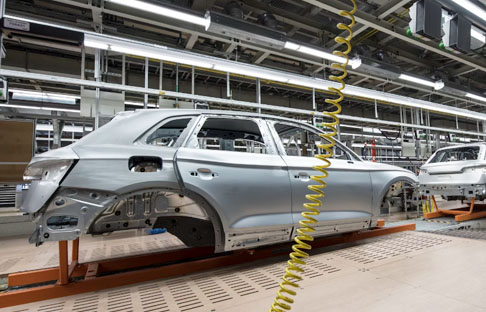The Automotive Aluminum Market is Steadily Growing

As the automotive industry evolves over time, the materials used in vehicle production have also changed. Aluminum, being lightweight and versatile, possesses properties that enhance automotive manufacturing safety. It also allows automakers to significantly reduce weight when replacing heavier steel, making vehicles more environmentally friendly and helping achieve emission reduction goals. Vehicle lightweighting has become a global trend in automotive development.
Why Use Aluminum in Automobiles?
Aluminum offers numerous benefits in the automotive industry. This article analyzes its advantages in vehicle lightweighting:
1. Weight Reduction
A key advantage of aluminum is its ability to reduce weight—aluminum weighs only one-third as much as steel. Despite being lighter, aluminum alloy automotive components can match the strength of steel parts.
2. Enhanced Safety
Aluminum alloy profiles reduce vehicle weight without compromising structural capacity, lowering the car’s center of gravity for improved stability and comfort during operation. Due to aluminum’s superior performance, it excels in crash safety: in a collision, the front crumple zone deforms to absorb significant impact energy, protecting drivers and passengers.
3. Eco-Friendliness
Aluminum is highly recyclable, with a low corrosion rate during reuse. The recycling process results in only ~5% material loss, giving aluminum the highest recovery value among metals. Additionally, its low melting point and excellent fluidity allow for casting complex, irregularly shaped components—a major advantage in automotive manufacturing. Among industrial materials, aluminum offers the highest value retention.
Latest News
-
062025.06
Sudden Boost for Alumina: How Long Can the Strong Momentum Last?
-
062025.06
Jiangsu Kaile Secures Patent: Metal Sheet Positioning Fixture Ensures Machining Precision!
-
062025.06
Jiangsu Kaile Metal Tech's New Patent: Flipping Device Boosts Efficiency in Ultra-Flat Aluminum Plate Processing
-
062025.06
Jiangsu Kaile Metal Develops Revolutionary Bending Machine - Patent Significantly Boosts Metal Processing Efficiency!
-
222025.05
Global Primary Aluminum Market Records 277,200-ton Surplus in March 2025
-
222025.05
6 Key Factors to Consider When Choosing Aluminum Profiles
-
222025.05
Why Are Industrial Aluminum Profiles Being Used More Widely?
-
222025.05
The Automotive Aluminum Market is Steadily Growing
-
292025.03
Jiangsu Kaile's AI-Powered Aluminum Plate Handling System Patent Approved: A New Breakthrough in Smart Manufacturing
-
152025.03
Jiangsu Kaile Secures Patent for Metal Plate Leveling Machine, Enhancing Conveyance Stability

